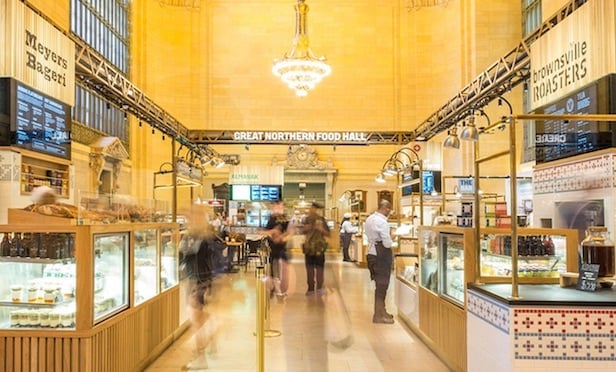 Great Northern Food Hall in Grand Central Terminal, New York City/Image credit: Heyer Performance
Great Northern Food Hall in Grand Central Terminal, New York City/Image credit: Heyer Performance
NEW YORK CITY—After working with Alain Ducasse, SushiSamba restaurants and Richard Sandoval's Modern Mexican Restaurant Group, Julia Heyer founded Heyer Performance in 2009. As a consultant, she has worked on more than 50 ventures in the food and beverage industry ranging from fast food casual to three-Michelin star chefs.
Just a few of her company's recent projects include the Great Northern Food Hall in Grand Central Terminal, Brooklyn Brewery, Battery Maritime Building in Manhattan, Block 37 in Chicago and Lords in Miami.
Heyer gives GlobeSt.com some food for thought on what's essential for success in this trendy but highly competitive business of food halls.
“Generally, restaurant traffic is down. Delivery is growing three times restaurant volume growth,” says Heyer. “Done well, a food hall can be bigger than the sum of its parts, delivering a more expansive experience than a single, quick, casual concept.” An added benefit for the developer is that the hall can survive despite the occasional failure of a particular tenant, she notes.
The real estate industry is looking to food as the experiential retail that will get people offline and into a brick-and-mortar building. But Heyer warns there are limitations. “The national average is approximately 400 people per restaurant, and the rate of restaurant growth exceeds the rate of population growth. The population to restaurant ratio only gets worse with the proliferation of food halls.”
She points out there are limited consumer dollars to be spent. Saturation points are market specific. That means developers and prospective tenants should contemplate reasonable revenue potential given the market demographics and competitive landscape.
Food halls seem like fun and exciting ventures. But they are far cry from a one-size-fits-all solution. Heyer sets forth a few key elements for a successful venture:
 Julia Heyer, founder of Heyer Performance
Julia Heyer, founder of Heyer Performance(1) It must have proper sizing for the market. Her company will statistically analyze a population's density, type, disposable income and specific spending patterns on food and beverage. Heyer Performance will then compare this overall spending to the number of other restaurants in a defined area. They'll consider what the market currently delivers in terms of revenue potential.
(2) The enterprise must have a value proposition narrative. Why would people want to go to your food hall? What makes it worth the trip? She warns that simply sticking 10 restaurants or concepts in a space won't work.
(3) The three main stakeholders: the landlord/developer/owner; the management firm; and the individual vendors must be able to financially succeed.
(4) There must be strong curation and a blend of concepts that supplement and do not cannibalize each other. Plus, there needs to be differentiation from the competition.
(5) The business model and lease terms have to work for the owner, tenant and management firm.
In addition, as with all businesses, food halls require good management.
The “If you build it they will come” concept is for a field of dreams, not the increasingly crowded field of food halls. Instead, Heyer's company provides services in new concept development and strategic positioning, design and experience guidance, market studies with competitive analysis, operational and facility advisory services, due diligence with feasibility studies, and financial projections with budgets.
Want to continue reading?
Become a Free ALM Digital Reader.
Once you are an ALM Digital Member, you’ll receive:
- Breaking commercial real estate news and analysis, on-site and via our newsletters and custom alerts
- Educational webcasts, white papers, and ebooks from industry thought leaders
- Critical coverage of the property casualty insurance and financial advisory markets on our other ALM sites, PropertyCasualty360 and ThinkAdvisor
Already have an account? Sign In Now
*May exclude premium content© 2025 ALM Global, LLC, All Rights Reserved. Request academic re-use from www.copyright.com. All other uses, submit a request to [email protected]. For more information visit Asset & Logo Licensing.








